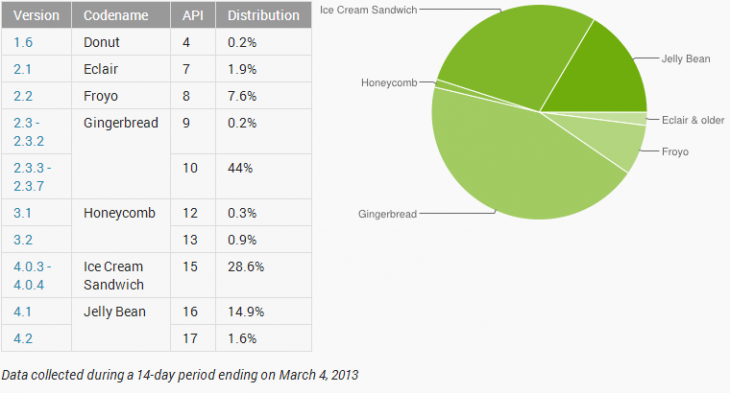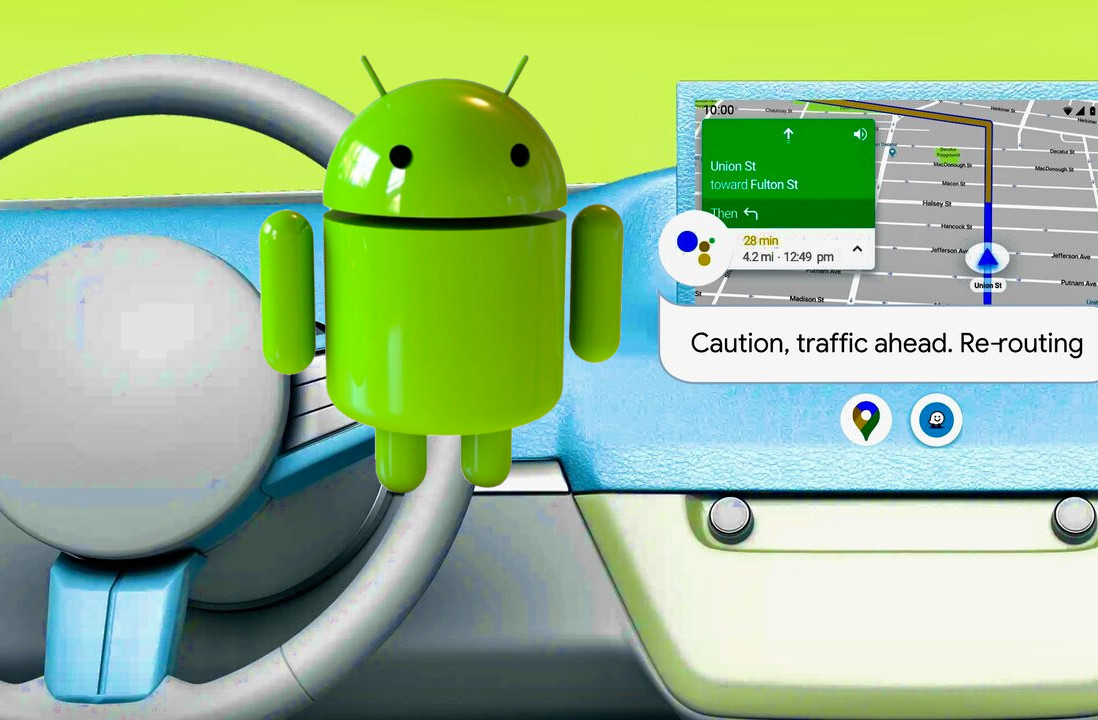
Google updated its Platform Versions Web page for Android on Tuesday, and slow progress is still being made, with some notable milestones in the last month. Android 4.2 (Jelly Bean) and Android 4.1 (Jelly Bean) are still growing and have passed the 15 percent mark, Android 4.0 (Ice Cream Sandwich) is starting to slip and will likely never pass the 30 percent mark. Finally, and arguably most importantly, Android 2.3 (Gingerbread) is now on less than 45 percent of devices.
Breaking down the numbers more specifically, 16.5 percent of Android users are using Jelly Bean, 28.6 percent have devices powered by ICS, 1.2 percent are on Honeycomb, 44.2 are stuck with Gingerbread, and 7.6 percent unfortunately still have Froyo. Here’s how the current Android landscape looks like in graph and table form:
Compared to last month, Android has shown its usual slow but notable progress. Android 4.2 has budged a minute 0.2 percentage points (from 1.4 percent to 1.6 percent) while Android 4.1 has gained a huge 5.9 percentage points (from 9.0 percent to 14.9 percent).
Android 4.0 has indeed peaked, as we guessed last month. It has dropped another 0.4 points (from 29.0 percent to 28.6 percent), meaning it will likely never cross the 30 percent mark.
Android 2.3 meanwhile is down 1.4 points (from 45.6 percent to 44.2 percent) and Android 2.2 fell 0.5 points (from 8.1 percent to 7.6 percent). The bigger picture remains unchanged: Gingerbread (released December 2010) is first, ICS (October 2011) is second, the latest and greatest Jelly Beans (June 2012 and November 2012) are third, and Froyo (May 2010) is fourth.
Given that we think ICS has peaked, we expect Jelly Bean to move up into second place by the summer months. Nevertheless, Gingerbread will probably remain in first throughout the majority of 2013.
Again, this is all assuming that Key Lime Pie devices don’t somehow take the world by storm. The Samsung Galaxy S4, arguably the next most popular Android device, will be announced in less than two weeks and will likely ship without Key Lime Pie a few months later.
As such, we expect Jelly Bean to keep plowing forward and Key Lime Pie simply won’t be able to catch up this year (until Samsung and carriers push out an update).
Image credit: Jenny Rollo
Get the TNW newsletter
Get the most important tech news in your inbox each week.






